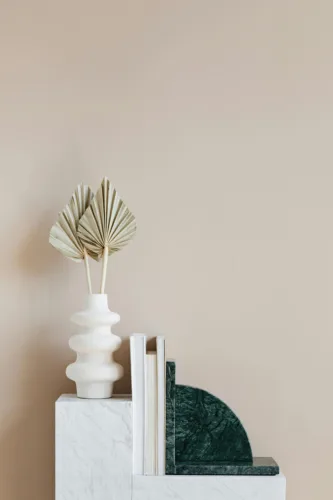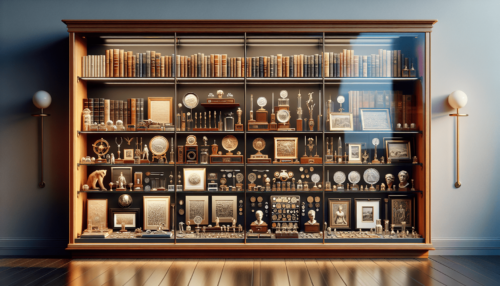How to Effectively Store and Organize Your Collection. Organizing and storing a collection can be a daunting task, requiring careful thought and planning. In order to effectively preserve and showcase your valued items, it is essential to adopt a systematic approach that takes into consideration various factors such as size, fragility, and accessibility. This article will outline practical tips and strategies that will help enthusiasts and collectors alike to efficiently store and organize their cherished collections, ensuring their longevity and ease of enjoyment. Whether you collect rare books, vintage vinyl records, or antique dolls, this guide will provide valuable insights and techniques to optimize the display and protection of your treasured items.

Table of Contents
Selecting the Right Storage Solutions
When it comes to storing and organizing your collection, it is crucial to choose the right storage solutions that meet your needs. One of the first factors to consider is the size and type of your collection. Whether you have a collection of books, art, or memorabilia, it is essential to select storage options that can accommodate the specific dimensions and requirements of each item.
In addition to the size and type of your collection, it is also important to evaluate the available storage space. Take into account the dimensions of the room or area where you plan to store your collection. This will help you determine how much storage space you have and how to best utilize it. By understanding the available space, you can choose storage containers or furniture that fit appropriately and efficiently.
Once you have considered the size and available space, it is time to choose the appropriate containers or furniture for your collection. Depending on the nature of your items, you may opt for storage boxes, shelves, cabinets, or specialized furniture designed for specific collections such as wine racks or art display cases. It is crucial to select containers or furniture that provide adequate protection from external factors such as moisture, dust, and light, to ensure the longevity and preservation of your collection.
Sorting and Categorizing Your Collection
After selecting the right storage solutions, the next step is to sort and categorize your collection effectively. Creating a logical system will help streamline the organization process and make it easier for you to locate specific items when you need them. Start by establishing a set of categories or themes that make sense for your collection. For example, if you have a collection of stamps, you may categorize them by country, year, or topic.
Once you have a logical system in place, it is important to group similar items together within each category. This not only makes it easier to locate specific items but also helps you identify any gaps or duplicates in your collection. Consider the characteristics, themes, or any other relevant factors that can help you organize your items within each category.
To further enhance the organization of your collection, ensure that each category is properly labeled. Use clear and descriptive labels that provide information about the contents of each category. This will save you time and effort by allowing you to quickly identify and access the items in your collection.
How to Effectively Store and Organize Your Collection
Cleaning and Preparing Your Collection
Before storing your collection, it is essential to clean and prepare each item for long-term preservation. Dust and dirt can accumulate over time, causing damage and deterioration. To remove dust and dirt, use a soft brush or cloth to gently clean the surface of each item. Be cautious when cleaning delicate or valuable items to avoid causing any damage.
Addressing any existing damage or deterioration is also crucial for the preservation of your collection. Identify any signs of wear, tear, or damage and consult with professionals or experts if necessary. They can provide guidance on proper restoration techniques or recommend suitable materials for repairing any damage.
To ensure the long-term preservation of your collection, it is advisable to use archival materials. Archival-quality acid-free folders, sleeves, or boxes can help protect your items from degradation caused by acids and chemicals present in regular storage materials. Investing in archival materials is essential to prevent irreparable damage to your collection over time.
Creating an Inventory
Creating an inventory is an important step in managing and documenting your collection. It allows you to keep track of each item, its acquisition date, and its value. Documenting your collection not only helps you stay organized but also serves as valuable information for insurance purposes, potential buyers or appraisers, and your own personal records.
When creating an inventory, include as much detail as possible for each item. Note the acquisition date, the source or seller, and any other relevant information about its history or significance. If applicable, include the value or estimated worth of each item. This information will be valuable if you ever need to make an insurance claim or if you decide to sell or donate items from your collection.
To simplify the inventory process, consider using inventory management software. These software applications provide convenient tools for cataloging and organizing your collection. They offer features such as barcode scanning, image uploading, and customizable fields, making it easier to track and manage your collection in a digital format.

Implementing a Storage Plan
Once you have sorted, categorized, cleaned, and documented your collection, it is time to implement a storage plan. A storage plan determines the efficient layout of your collection within the available storage space. By organizing your collection strategically, you can optimize accessibility, visibility, and the overall preservation of your items.
Determine an efficient layout that allows easy access to each item in your collection. Consider the frequency with which you will need to retrieve certain items and position them accordingly. Items that are accessed more frequently should be placed within easy reach, while more rarely accessed items can be stored in less accessible areas.
In addition to accessibility, optimizing visibility is crucial for appreciating and maintaining your collection. Position items in a way that allows you to see and admire their details without causing any damage. Consider using display cases, glass shelves, or other suitable methods to enhance the visibility of your collection.
For fragile or delicate items, it is important to provide proper padding or supports to protect them from any potential damage. Use materials such as acid-free tissue paper, bubble wrap, or foam padding to create protective layers around your items. This will help maintain their condition and minimize the risk of breakage or wear.
Maintaining and Updating Your Collection
Maintaining and updating your collection should be an ongoing process to ensure its preservation and accuracy. Regularly inspect and monitor your collection for any changes in condition or signs of damage. Detecting any issues early on can prevent further deterioration or irreversible damage.
As you acquire or dispose of items, be sure to update your inventory accordingly. Maintain accurate records of acquisition dates, values, and any relevant changes in ownership. This will help you stay organized and informed about the current status and contents of your collection.
Take precautions against environmental factors that may pose a risk to your collection. Environmental factors such as temperature, humidity, and light can affect the condition of your items. Invest in proper storage solutions that offer protection against these factors, such as climate-controlled rooms, UV-blocking glass, or window coverings.

Digital and Online Organization
In today’s digital age, it is increasingly important to consider digital and online organization for your collection. Digitizing your collection by scanning or photographing each item provides easy access and backup options. In the event of loss or damage to physical items, digitized versions can serve as a valuable resource.
Consider using specialized databases or cataloging software designed specifically for collectors. These tools offer advanced features such as metadata tagging, keyword search, and customizable fields, making it easier to organize and retrieve information about your collection.
Additionally, explore online platforms dedicated to collectors for sharing and networking. Joining online communities and platforms allows you to connect with other collectors who share similar interests. You can exchange knowledge, showcase your collection, and gain valuable insights from fellow collectors.
Displaying Your Collection
Displaying your collection is an exciting way to appreciate and share your items with others. When choosing appropriate display methods, consider the nature and characteristics of each item. For example, if you have a collection of paintings, consider using well-lit walls or art easels to showcase them. If you have a collection of physical objects, such as figurines or antiques, consider using display cases or shelving units to highlight their unique features.
In addition to aesthetics, it is important to consider space limitations when displaying your collection. Ensure that the display area has enough room for each item to be properly showcased. Avoid overcrowding or cluttering, as this can detract from the visual impact of your collection.
Proper lighting is crucial when displaying your collection. Natural or ambient lighting can enhance the overall appearance of your items. However, it is important to protect your collection from UV radiation, which can cause fading or deterioration. Install UV-blocking films on windows or use UV-filtering glass to protect your items from harmful light exposure.

Insurance and Security Measures
If you have a valuable collection, it is essential to evaluate and insure its value. Engage with professionals or appraisers to accurately assess the worth of your collection. This will allow you to obtain appropriate insurance coverage to protect your investment. Keep detailed records and documentation of the value, acquisition dates, and any appraisals to support your insurance claims.
Implementing security measures is also vital for safeguarding your collection. Consider installing security systems such as alarms or surveillance cameras to deter theft or unauthorized access. Adequate locks and secure storage locations can provide an additional layer of protection.
For valuable or irreplaceable items, it is advisable to store them in a secure location. This could include a safe, a locked cabinet, or a dedicated storage facility. Choose a location that offers appropriate security measures, such as controlled access and climate control, to ensure the safety and preservation of your most valuable items.
Documenting and Sharing Your Collection
Documenting and sharing your collection is an excellent way to showcase your passion and knowledge. Capture high-quality photographs or create videos of each item in your collection. Be sure to capture different angles and details that highlight the unique features of each item.
Alongside visual documentation, consider writing descriptions or narratives that accompany each item. Include information such as the history, significance, or interesting facts about the item. This provides a more comprehensive understanding of your collection and adds a personal touch to each item.
Sharing your collection can be done through various avenues such as exhibitions, websites, or social media platforms. Participating in exhibitions or galleries allows you to showcase your collection to a wider audience. Creating a dedicated website or online portfolio provides a platform for people worldwide to view and appreciate your collection. Utilizing social media platforms allows you to engage with other collectors and enthusiasts, sharing your passion and knowledge.
In conclusion, effectively storing and organizing your collection requires careful consideration and planning. By selecting the right storage solutions, sorting and categorizing your collection logically, cleaning and preparing your items, creating an inventory, implementing a storage plan, maintaining and updating your collection, exploring digital and online organization, displaying your collection thoughtfully, implementing insurance and security measures, and documenting and sharing your collection, you can ensure the longevity, preservation, and enjoyment of your valued possessions.

Related site – How to Organize and Store Your Collection

